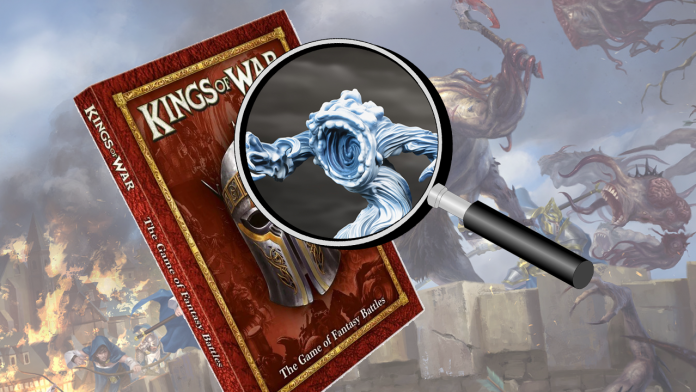G’day, Goonhammer readers! By now, most of our Kings of War readers will have the Kings of War (2022) book (aka The Big Red Book) in their eager hands. We have already covered the various new game modes; Legendary Games, Siege and Ambush. These already are exciting additions to what is already a great game, but within the Core Rules and Army Lists are a slew of updates, some obvious (like the Twilight Kin) and some less so. We won’t be listing all of these changes, but we do want to highlight what we did find in our time with the book.
In case you missed our prior reviews, you can find them here:
The Nerf Bat Returns, Kinda
Clash of Kings 2022 was famously the “no-nerf CoK”, and in almost every regard it delivered on that promise. Many underutilised units were elevated from mediocrity, and exciting enhancements were bestowed on all manner of units, many making them more interesting and useful.
Many say the true effects of last year’s Clash of Kings still haven’t been fully realised, but already there were a few units that needed something to keep them in check. Yet it’s not all bad. Other units that were being neglected by players have received improvements, either in the form of points adjustments, or interesting new rules.
Reigning in the factions
Cooling down the Nightstalkers
It took some time to realise their potential post-COVID19, yet Nightstalkers have been the top army of the last year. They were a dominant force at the recent US Masters, taking both first and second place (can read about the top lists here).
Already a faction with a lot of strong options, Clash of Kings gave them even more, jumping them to the top of the competitive scene. This new update tones the faction back down, and brings some of their uniquely powerful options back into line with those of other factions. There’s no single massive nerf, just a few light touches across multiple units to decrease their power.
- Soulflayers are down to Speed 8.
- This speed reduction makes Soulflayers like other factions’ “heavy” cavalry units. They still hit hard, but don’t dominate the battlefield with their threat quite as much as they did.
- Mind-Screeches are down (literally, hah!) to Height 4.
- Losing their height means Mind-Screeches will need to be in the open to effectively cast Lightning Bolt, rather than sit safely behind a Scarecrow unit and fire at full efficiency all game. Of course Nightstalkers still have loads of options, so they can hide behind Needle-fangs without penalty.

Some breathtaking changes in the Big Red Book
- Losing their height means Mind-Screeches will need to be in the open to effectively cast Lightning Bolt, rather than sit safely behind a Scarecrow unit and fire at full efficiency all game. Of course Nightstalkers still have loads of options, so they can hide behind Needle-fangs without penalty.
- The Banshee loses the ability to stack Resonant Chorus with the Zephyr Crown.
- Banshees formerly had the ability to stack casting Wind Blast twice, with extra dice from the Crown, and have both casts damage its victims. Now that Resonant Chorus cannot be stacked with magical artefacts, the Banshee is not quite as good a disruption tool, though two casts of Wind Blast 5 that potentially do damage is still a nice option.
- Reapers and Scarecrows lose attacks.
- Reapers go down in both attacks and points, making them equivalent to other factions’ beserker-like units. Soul Reaver infantry suffered a similar fate, but the points drop means you can buy an extra item if you’re keen on increasing that efficiency. Scarecrows also lose attacks, matching other faction’s cheap infantry.
- Horror Riftweavers lose Aura (Spellward).
- This is perhaps the biggest change. Horror Riftweavers were a very cheap, solidly punchy, scoring monster. It could hide in your lines, providing Dread and mitigating the Nightstalker’s biggest weakness; their vulnerability to spells that ignore their Stealthy. Now, it still does all that, bar the protective effect.
Note, it seems like the Kings of War Rules Committee sees easy inclusion of Spellward as too strong, as we also lose the Banner of Abbetshire from the game as well (the Halflings repossessed it).
Peeling back the layers of Ogres
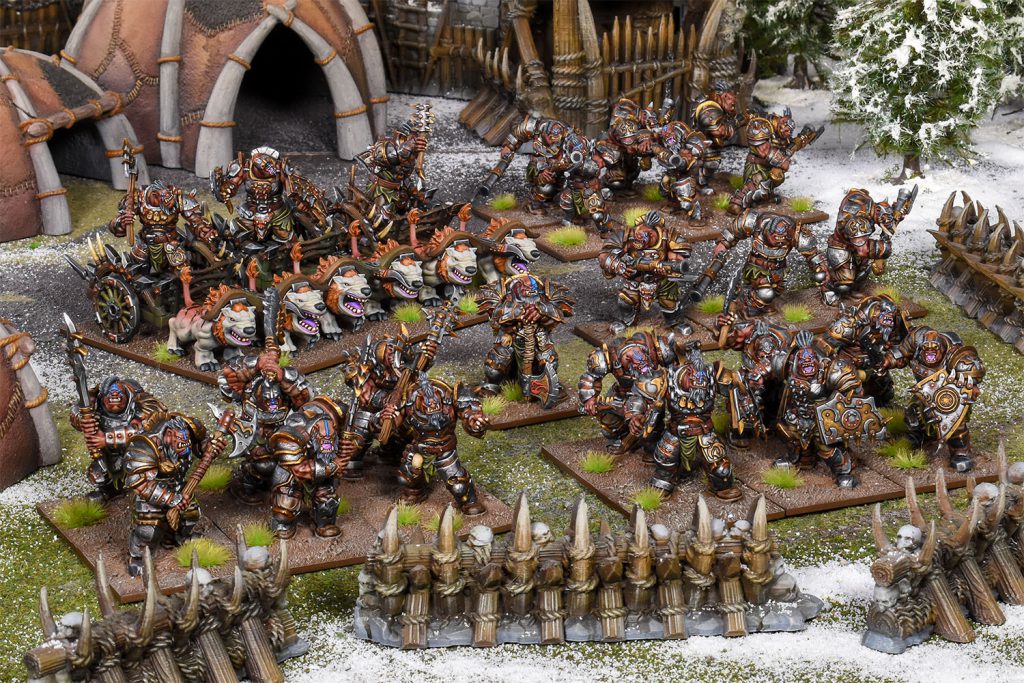
Another faction that was seeing a lot of tournament wins and placings was the Ogres. The last Clash of Kings book opened up their list building by allowing Ogre Warrior regiments to unlock. This was definitely needed, as getting access to all the cool stuff in Ogres was difficult with just hordes. However, this gave Ogres easy access to their very strong hero units. Regiments of Warriors were also great to support those heroes as “Thicc Chaff”.
This led to the development of the 9×9 or 8×8 lists; taking as many Ogre heroes (Berserker Bullies, Warlocks & Sergeants) as possible, unlocked by cheap Ogre Warrior Regiments. This style of list could overwhelm the board with cheap scoring units that were still very dangerous, especially in a flank, and these flanks could be achieved easily thanks to said nimble hero options.
This has been pulled back, with only three regiments of Warriors unlocking now. If you want more heroes, you’ve got to unlock with hordes again.
Speaking of Hordes, the other archetype of Ogres lists, the Siege Breaker Horde heavy list, has also copped a points increase. Both Siege Breakers themselves, and Nomagarok (who is usually in every list) also went up in points. Not a whole lot, but hopefully enough to give some validity to taking Warriors now, rather than Siege Breakers being the obvious choice. Nomagarok will still probably be in every Ogre List, but at least there’s a sacrifice of an item or two now.
Twilight Kin enter the void (temporarily)
The biggest change to any single army is the removal of the Twilight Kin from this book.
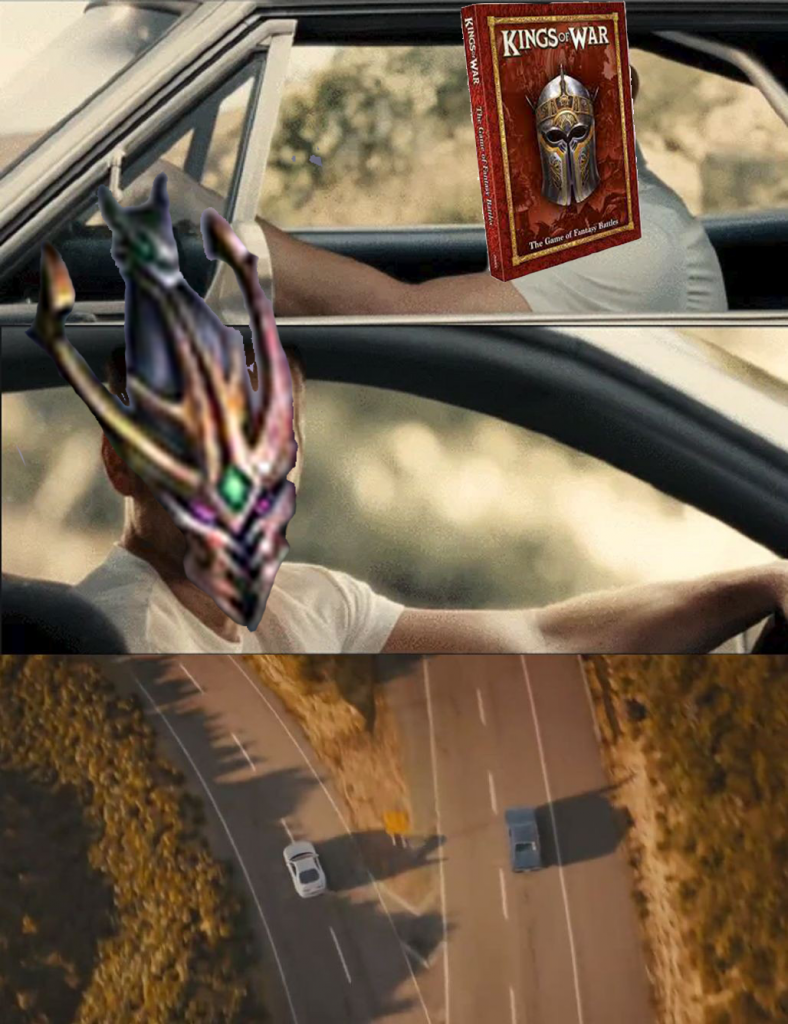
While the rules for the army still exist and are still playable in both casual and competitive games, there’s big changes going on in the world of Twilight Kin.
Mantic are doing a complete range refresh in terms of both models and rules, bringing the faction away from the common fantasy trope of “evil elf” and into something much more Mantic. They are focusing on their bond with the Nightstalkers and leaning into the corruption that comes from that.
So if you’re thinking of starting a Twilight Kin army, it’ll be worth waiting a few months to see what comes next. Considering the latest hotness coming from Mantic (Halflings, Empire of Dust and Ogres), we might even pick some up ourselves (Urr, not Cytoplasm, he has too many armies, for now)!
What didn’t get hit?
There’s only one other extremely high performing list from the US Masters emerged unscathed, the Forces of Nature. This new level of superiority is mostly down to the much improved Greater Air Elemental, who just does it all. Good Melee, fearless, small base size, fast, Flying, Nimble, and Pathfinder, combined with Shambling meaning it can be easily Surged into flanks and rears. This is a unit that probably needed a little touch, with at least one, and usually two showing up in every Forces of Nature Masters list. We’re not exactly sure how you could bring down the power without ruining the theme of the unit, but probably a small increase to points is the way to go, or a little touch to the Surge casters in the army.
Light touch-ups
As alluded to above, some units received slight improvements. In a lot of cases these buffs are felt across multiple armies, making them slightly more enticing options during list building. None of these we can really disagree with (but would always love more!).
Send in all the cavalry
Cavalry units are in many cases 5-10 points cheaper. This is compensation for the gradual build-up of changes that reflect poorly on these mounted warriors. These include Phalanx, the introduction of the spell Scorched Earth, and the removal of Maccwar’s Potion of the Caterpillar.
Fire up the Phoenix
The Phoenix received a major overhaul of stats; higher Nerve, dropped Fireball in exchange for a ranged attack (Firesparks), lost Radiance of Life, but became 50 points cheaper. Most excitingly, for only 30 points, the Phoenix can be Ancient, which makes it Defence 2+, but gains Regeneration (3+) and both Radiance of Life AND Cloak of Death. This immediately makes the Phoenix so much more interesting to use, and we expect those beautiful Mantic models will see some more table time.
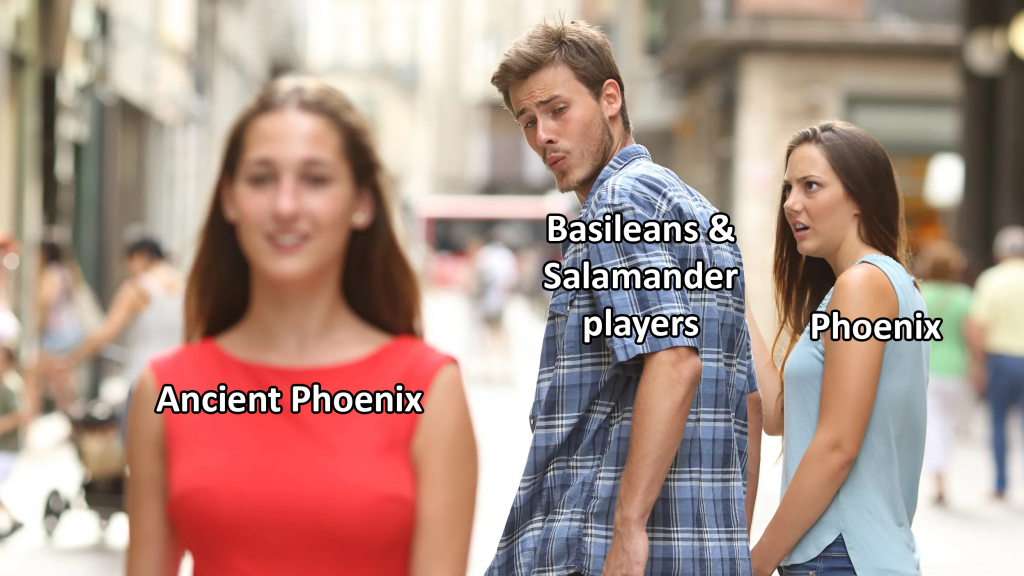
Hell of a Hellfane
The awe-inspiring titan that is the Hellfane now provides a whole lot of synergy depending on the kind of Abyssal Dwarf army being fielded. There’s a choice of three different Auras, each of which is based around who is riding this living altar of destruction. The Overmaster provides Aura (Wild Charge (+2)) and Inspiring to infantry, the Taskmaster Aura (Brutal) and Rally (2) to slaves, and the Overseer Aura (Lifeleech +1) to Abominations.
Giants grind bones equally
The last update introduced the new Slayer rule to Giants, giving them an edge when fighting other large things in Pannithor. Now, one can choose between Slayer and Rampage for their Giant, which helps fill any weakness an army might have. Simple but effective change!
Extra pew on the Goblin Slasher
The Goblin Slasher is a great model, but in an army of so many good choices, it is hard to justify its inclusion. The Sharpstick Thrower is useful, but at odds with wanting to get the unit into combat. Now it can be replaced with a War-Trumpet, a mounted War-Trombone, which is a unit all Goblin players agree is much more fun. In addition, the Slasher is now Unit Strength 2, which increases its value in an army that likes to play scenarios.
Taking cover from war engines
The gaining of cover has now been subdivided into two kinds of statuses; Obscured and Concealed. Much discourse has already been devoted to these changes, but it boils down to two definitions.
- If at least half a unit is behind intervening terrain or other units, then it is Obscured.
- If at least half a unit is within Difficult terrain, then it is Concealed.
In either case, the unit gains cover (-1 to hit). Height is still relevant to determining Obscured, but not Concealed.
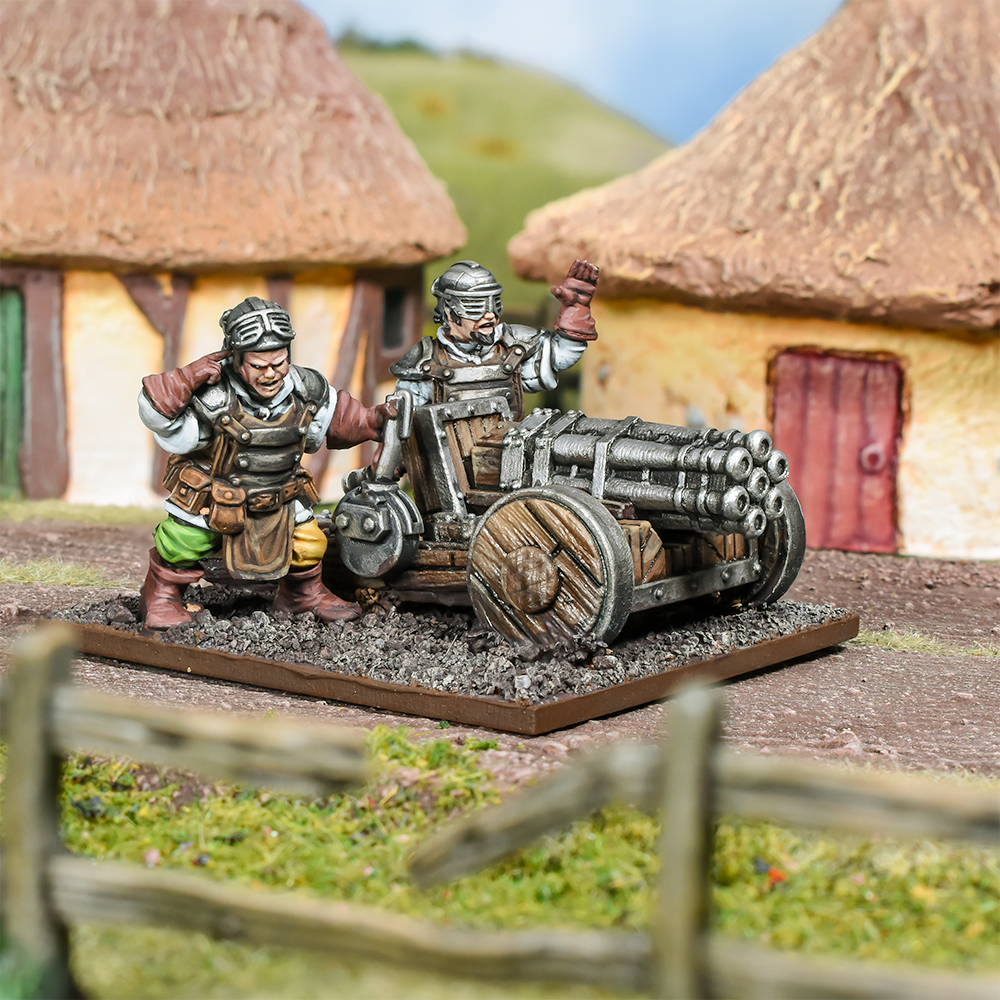
Where war engines come in is that instead of having Ignores Cover, they now either have Ignores Obscured or Ignores Concealed. Big Rocks Throwers have Ignores Obscured, thanks to their arc of fire they can just plonk rocks on the enemy. Cannons have Ignores Concealed, reflecting instead the punching power of a cannon ball through a forest or field.
There is some confusion about how these work in forests, but a wonderful video by Master Crafted truly helps clarify the situations that these different rules apply.
Sharpening the bolt throwers
Of all the war engines, bolt throwers are the most neglected. Lacking the ability to ignore any kind of cover, and usually of lower armour penetration, these are overlooked in favour of cannons and catapults. In all cases, these units are now cheaper, and in some instances, have gained new rules, such as the Null Void Bolts of Elven Bolt Throwers, which confer Spellward on their target (to partially inhibit Bane Chant, Heal, or Surge).
The most Noble of War Chariots
The Elf Noble War Chariot was just never taken, especially when the King’s Champion appeared in Clash of Kings ‘22. Yet now, for no change in points, this brave charioteer gains an attack, and now has Crushing Strength (1) and Thunderous Charge (1). Small changes, but now can reliably ground a flyer (thanks to Elite and Melee 3+).
Cast the bones in the Empire of Dust
It was no secret that Cursed High Priests were deemed inferior to the extremely pervasive Monolith, which could Surge anything, anywhere (almost). At 70 points, the Cursed High Priest is now much more tempting, with Reanimator special providing rerolls to spells depending on how many skeleton units are around. The Monolith is good, but it certainly doesn’t get rerolls.
Speaking of skeletons, the Undead Wyrm has dropped a massive 35 points in price. This bone dragon brings all the goodness of a high Crushing Strength, fast flyer for a fraction of the price of other dragons. The downside is that it is Shambling, but this is made up for by the fact that it is also Shambling.
Host a different kind of Shadowbeast
It was no secret that Host Shadowbeast was a fantastic spell on a very select number of heroes. The spell, which formerly added a number of attacks to the hero according to the number of successful cast rolls, did not stipulate whether these attacks could be multiplied or not. Hence heroes that could vastly increase their attacks like Mikayel, Lord of Nightmares, or Groany Snark, could put out horrendous amounts of damage when enhanced with Host Shadowbeast. The downside of this spell was that very few factions possessed heroes with such capabilities, making this spell useful to only three factions.
To address this disparity in application, Host Shadowbeast has been modified to now add attacks that are separate from the hero’s profile. These attacks always hit on 3+, and have Crushing Strength (3), and can never be multiplied, similar to the extra attacks bestowed on Goblins by Mawpups.
![]()
This new version of Host Shadowbeast won’t obliterate units, but it is a very reliable bit of extra damage, best cast on a hero that is contributing to a greater combat. The best part is, this hero could be anyone, another caster, the caster themselves or a measly standard bearer. Their own profile doesn’t matter and they are simply host to extra attacks, or rather, a shadowbeast.
Our condolences to Twilight Kin, Goblins and Riftforged Orcs players.
More Rules Changes!
One of the more subtle updates included in the Big Red Book is the inclusion of all the FAQs and erratas that have been introduced across the lifetime of 3rd edition. Not only does this reduce the number of PDFs to keep track of, but means newer players can read the book and have an up-to-date understanding of the game. Additionally there have been a few adjustments and even some new rules, such as that to cover (mentioned above regarding war engines), as well as others, explored below.
Smoothing out charging alignment
Some charges are simple affairs with one unit crashing into another. Things get a little more complicated when two units want to charge the same facing, yet generally it’s about sharing equal frontage. But when two or more units want to charge different facings where their bases might clash, that’s when it can get complicated.
Before, the order in which the charges were executed was paramount to getting all the units in. For instance a flanking horde would have to go first, then the second unit in the front, otherwise the front charing unit might prevent the horde from fitting at all. This is often a tripping point for new players, who will eagerly go into charges in the wrong order, and then without marking where units were prior to the charge (a good practice) the whole game gets a whole lot more confusing.
In such cases, units can now shuffle in order to accommodate units in other facings (where feasible to do so). A horde in the front can shuffle sideways to let a horde into the side, for instance. This places less importance on the exact order of charges, when it is otherwise very clear that all the units can fit so long as some adjustments are made. Sure, it was sometimes fun to solve the puzzle of getting the units just right, but we can all agree that by round 3 of a tournament we would rather get the job done as simply as possible.
Withdrawing on withdraw
Withdraw, the free 1” movement backwards from an enemy unit, was often a means to charge a unit other than the enemy unit with which one was previously engaged. This mechanic enabled all kinds of plays, such as the classic 90° charge into the flank of an adjacent enemy unit, or, if Nimble, to completely circumnavigate the enemy to hit something else (which can still be done regardless of the new changes).
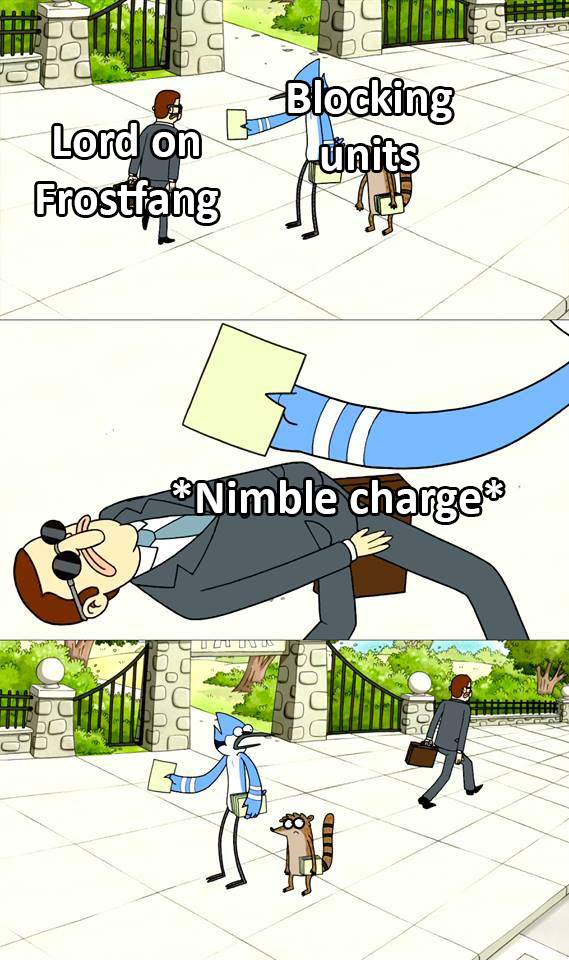
In the section on Countercharging, the new “Optional Rules” section details the new rules for Withdraw, which when included in games impose a -1 to hit on the unit performing the withdraw for the turn. When before an opportunistic flank charge after a withdraw was an easy decision, now it will take some consideration. A Melee 4+ unit hitting on 5+ after a withdraw might not be the decisive blow one hopes for, for instance.
Setting it as an optional rule means players and tournament organisers should stipulate beforehand on whether Withdraw should be included in the game. Some tournaments are already forgoing the rule entirely, while others will stick with it but include the -1 to hit. It will be interesting to see how this shakes up the meta, and if armies change as a result.
Whether or not this is considered good or bad gameplay is purely a matter of opinion (of which there are plenty out there), but it is often the first tripping point for newer players. Losing your first painted regiment to a 90° flank charge you never saw coming can lead to one of two outcomes; appreciation of a mechanic that was not immediately apparent in the rules, or disdain that such a thing can occur. How much each occurs among new players is not known, but if it turns people off Kings of War, then it’s not such a great thing.
Moving forward
Given the light touch approach of this update, the flux of the meta will be slight, with no armies jumping to the top or crashing to the bottom. Nightstalkers will come down a little, while we’ll probably see a slight shift in the Siege Breaker builds from Ogres. While the 9×9 is gone, there’s still a lot of strength in the Ogres faction, so we expect they’ll still be up there, along with the Forces of Nature.
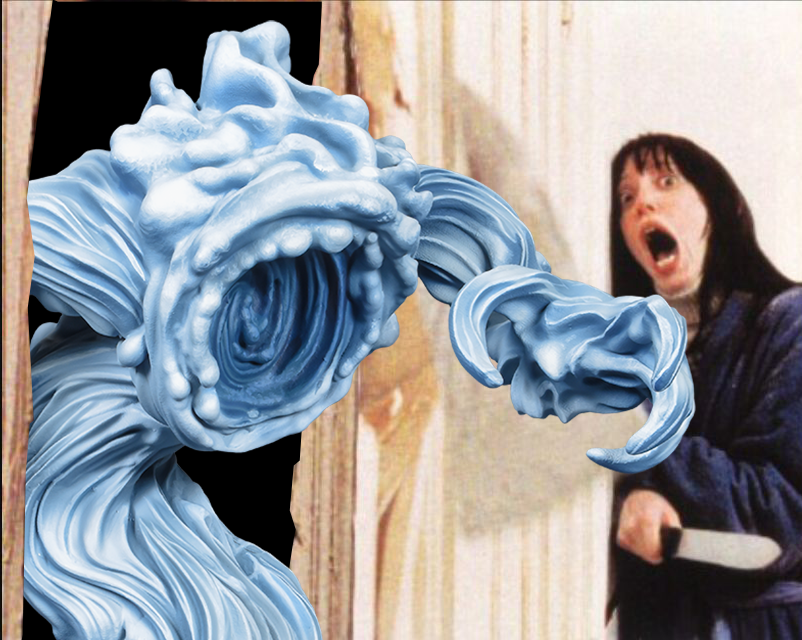
What has really been showing its power lately is the square based monsters of Kings of War. Generally, they can fight, they can score, they are fast enough with Nimble, and are reasonably hard to pick off. They also aren’t affected by the Withdraw change like actual units, as their base size lets them pivot without Withdraw during a charge. They really can do it all. The 9×9 Ogre list epitomised the power of this style of list with all of the heroes, and Greater Air Elementals pulling up the Force of Nature are another example of this kind of power.
Those armies with access to cheap unlocks and strong monsters and hero choices will start to flex their muscles. For example, Jeffery Traish’s ConVic list was 9 punchy Varangur Monsters & Heroes (3 Snow Troll Primes, 2 Lords on Frostfang, 1 Thegn on Frostfang, 2 Jabberwock and Krufnir) unlocked by the cheap Draugr Regiments and Hordes, and still had the points for two regiments of Mounted Sons of Korgaan. Lots of factions can play this style of list (sorry Elves). It will be interesting to see how the meta fluctuates around it, and then if we are right (big IF), how the Rules Committee might respond to it.
A solid book worthy of acquisition
We said it in our last articles, and we will just repeat ourselves here. This book has it all; the updates, the army lists and whole new ways to play the game. If there was ever a book in Kings of War worth having, it would be this one. That said, for those that really can’t get into these new fandangled books, there is the Mantic Companion, which contains everything from rules to army building, and right now it’s free until the end of January 2023. Either way, get onto this new content and play some epic games!
Have any questions or feedback? Drop us a note in the comments below or email us at contact@goonhammer.com.
